31 Mar Costa Rica 2017 – Travel Journal Part 1 – Overview
See Part 2 (Science) or Part 3 (Terrazú).
Costa Rica is a relatively small Central American country, bordering Nicaragua in the north and Panama in the south. To the east is the Caribbean Sea and to the west, the Pacific Ocean.
Peace and pura vida
Pura Vida (pure life). Not many countries can sum up their core values in just two words. This simple statement has a much deeper meaning than words printed on a t-shirt. These two words offer guidance for leaders who are responding to the will of the Costa Rican people — profound guidance that affects everyone who lives in Costa Rica, including coffee farmers.
Costa Rica is a social democracy. Social Insurance collected from both individual and employer payroll contributions funds health care, pensions and disability. This is a central part of Costa Rican life and has wide support of the people. Funding these social programs combined with comparatively higher wages than their coffee-producing neighbors adds to the cost of producing coffee, relative to other nearby producers.
There exist a societal value on education that is reflected by a literacy rate in excess of 96%. After the end of the Civil War in 1948, the standing army was disbanded. Today there exists the Fuerza Pública, a small group that functions as ground security, law enforcement, counter-narcotics, border patrol, and tourism security. There also exists a small force for air surveillance that has 15 aircraft and a special forces unit. This commitment to peace has provided an environment of growth, research and development uninterrupted by conflict. The value of peace to a long-term agricultural crop like coffee cannot be overstated.
For coffee milling, a water revolution
Environmental restrictions on fresh water use have transformed the Costa Rican coffee industry. Mill waste water is required to be tested 3 times a year. There is a commitment by Costa Rican policy makers to protect rivers and streams from pollutants including organic matter produced by coffee wet mills. If a mill fails any test throughout the year, they are shut down until a plan of correction is submitted and approved. This has effectively ended the days of the “traditional†wet mill.
Consistent, committed support by lawmakers and government agencies, educated farmers, committed to excellence that are driven by the forces of ever tightening environmental standards and higher wages has provided the perfect conditions for the Micro Revolution.
Costa Rican varieties and regions
Primary varieties of coffees are Caturra, Cataui, and Villa Sarchi. Also seen were Geisha, El Salvador Bourbon, Kenya SL-28, Moka, Typica, and a variety of Hybrids that included Sarchimor and the F1 (Centro-Americano).
Growing Regions are Guanacaste, Brunca, Turrialba, Orosi, Valle Central (Central Valley), Tres Rios, Terrazú, and Valle Occidental.
Las Lajas
Oscar and Francisca Chacón
1300-1500 Meters-Central Valley- Volcano Poas
Specialty- honey prep (yellow-red-black) and natural
Oscar and Francisca Chacón
In Costa Rica coffee is measured by volume vs weight. Ripe coffee is physically larger and due to sugar content weighs more. This combination provides incentive throughout the process for the picker to pick ripe fruit.
In comparison, pickers in El Salvador are paid per saco (25 pounds). The pickers in Costa Rica use a system of Caja and Fanegas. Both have an approximate weight assigned of 16 kg and 92 kg respectively with an understanding these are not as relevant as the standardized size of the caja and fanega. This simple but ingenious method ensure that ripe fruit are picked.
Standard measuring device for a Fenaga
The Penagos Micro-Mill at Las Lajas has been customized to prepare honey prep coffees with a more gentle de-pulping design.
One of the key components of the Penagos Micro-mill is the de-mucilager. Notice how clean and new it appears. Oscar does not use this component at Las Lajas as he does not produce fully washed coffees and prefers to control the processing of honey prepped via the drying process.
The evolution of processing
The modern specialty coffee farmer has to excel not only in the field, but also in the art of processing. The evolution of processing offers yet another example of why the farmer is the star of the world of coffee and the roaster is simply the stage hand.
Drying Natural Process on Raised African Beds. Notice the black plastic rolled up at the
end of each bed. The plastic not only protects the coffee from rain and nightly moisture,
but can provide the farmer an additional tool to control drying times.
The primary difference between the 3 types of honey processing is flavor. This is where the farmers’ techniques and care add real value. The names are given due to their color when the coffee in parchment has reached its target moisture content.
Techniques vary widely and farmers like the Chacón’s are aggressively pursuing new methods that improve quality and unique characteristics that will provide a higher value. Generally, the drying time and exposure to sunlight is what separates the three types of processing — yellow honey has a shorter drying time with more time in the sun imparting a yellow color on the parchment, red honey and black honey have target moisture times extended by drying on cloudy days or actually covering with black plastic.
Drying on raised African style beds is now common practice. The Chocón’s, as well as the other Central Valley farmers have built covered shelters (greenhouses) to assist them in controlling temperature during the drying process. Although “piling†coffee is not a new strategy to control the temperature of the parchment, the Colón’s are experimenting with large piling within their greenhouse.
Yellow Honey drying in greenhouse to control drying time. Oscar is experimenting with large piling with hopes of slowing the drying time and improving cup quality. Target moisture content 10.5%.
Coffee is stored in parchment until coffee buyers approve samples further protecting quality and allowing coffee to stabilize.
EP and SHB
European Prep (EP) is not an indicator of quality but it is does indicate a higher standard, as EP refers to ‘European Preparation’ which is 100% above screen size 15 and allows a maximum of 8 defects per 300g. SHB (Super Hard Bean) Coffees grown over 1300 meters (4000 feet) above sea level mature more slowly, are much more dense, and are generally considered to be the most desirable by buyers.
On the cupping table
As a group, we cupped 21 coffees. The presentation of the coffees featured the processing styles versus the coffee varieties.
The pursuit of excellence at Las Lajas is based on picking fruit at ideal ripeness, and the impact of processing on cup quality. Although coffee varieties will always matter and should and will remain a primary consumer identifier, the art and skill of processing has taken on a new level of importance in specialty coffee that was on full display on the Las Lajas cupping table.
Yellow, red, black honey, and naturally processed only. Primary culitvars were Caturra, Cataui, and Villa Sarchi. There was an outstanding Kenya SL-28, but what really stole the show for me was honey-prepped Sarchimor. The Sarchimor is a hybrid consisting of the Costa Rican Villa Sarchi and the Timor culitvars. Timor is a hybrid of Arabica and Canephora (Robusta). This pairing provides Sarchimor with the desirable qualities of resistant to leaf rust disease and stem borer. Based on my experience the Sarchimor variety has never cupped well enough to make me believe it has a future in Specialty coffee. My opinion changed during this cupping session. I expected The Chocón’s to present excellent coffees and they did not disappoint. The honey prepped Sarchimor and an SL-28 stole the show — not only high quality, but one of the stars of the cupping table. Impressive.
We ended our stay at Las Lajas with a lunch of grilled chicken, steak, and vegetables, salad and a few of the local Imperial Cervesas.
Thank you to the Chocón Family for hosting us. A wonderful and educational experience.
Aguileras Family Farm & Micro-Mill
8 Brothers
1300-1700 Meters
Los Robles de Naranjo, West Valley
Their parents purchased the lands of the Aguilera Coffee Farms 70 years ago. Today, although much has changed, the eight brothers work these farms as their father did in 1967. In 2007, there was a 4th place finish in the first Costa Rica Cup of Excellence competition and several others since. They used the proceeds from the sale of the COE coffee to purchase a Penagos Micro-Mill and subsequently leave the COOP they had been members of for years.
When asked what their biggest challenge in this new world of Specialty coffee is, their response was, “We used to farm, pick ripe, then drop off the fruit to the COOP, and our work was done. But today when the harvest is complete, our work has just begun.” Seems like they have things under control. Each brother has their specialty which spans from nursery to dry mill. The founders and parents, still living, were initially nervous about their bold moves, but now that they have seen the results are very happy with the success of the farm. There are also 4 sisters with farms of their own. Their harvest is, of course, processed at the new Aguilera family farm micro-mill.
Primary culitvar is Villa Sarchi, but also Sarchimor, Gesha, SL-28, Pacamara
Like many specialty farmers in the Central Valley, the Aguileras use a greenhouse to help control the drying process. Little rain at the beginning of the rainy season and heavy rain late has affected this years yield. For the Aguilera’s, production is down 50 % to about 700 bags.
One of the advantages of having a large family is you don’t need to depend on the neighbors to get a soccer game going. The Aguileras have their own regulation size soccer field on the finca. Although this time of year, everything takes a back seat to coffee production. Yes, that is a regulation size soccer field length of coffee drying naturally. Young, and a bit stressed while waiting for this year’s first rains, Geisha cultivar in the foreground.
Although having been here for just a few hours, I get a sense of family, tradition, hard work, and a commitment to excellence. Thank you to the Aguilera family for taking the time to share this beautiful piece of the world. Pura Vida.
Next >  Part 2: The science
Jump to Part 3: Terrazú




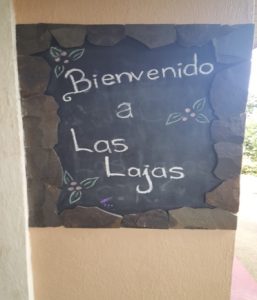

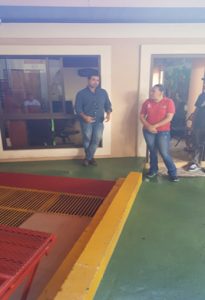
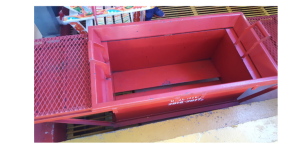
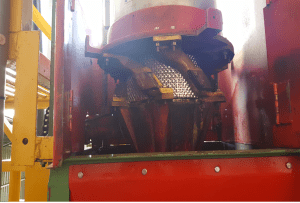
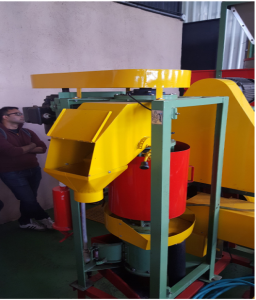
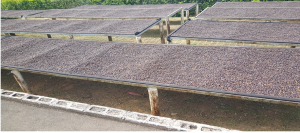
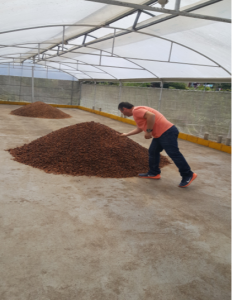
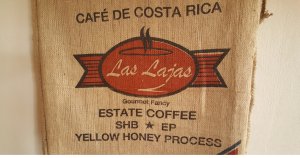
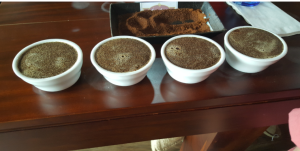
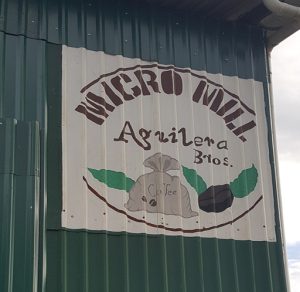
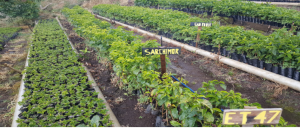
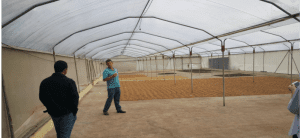

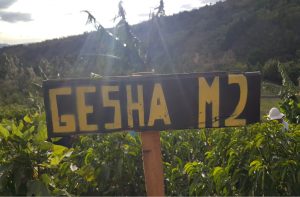
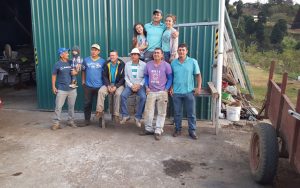
Sorry, the comment form is closed at this time.